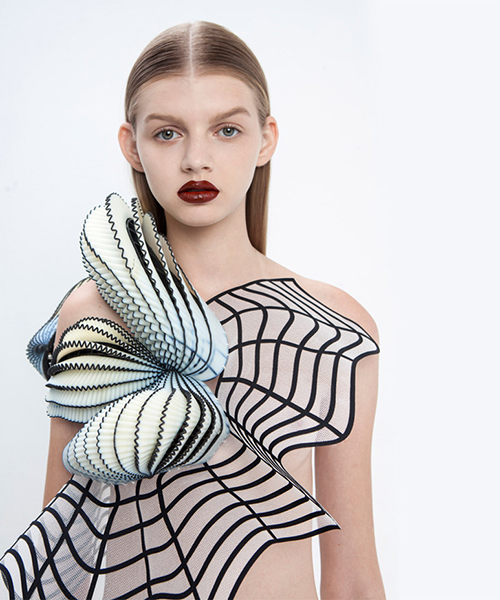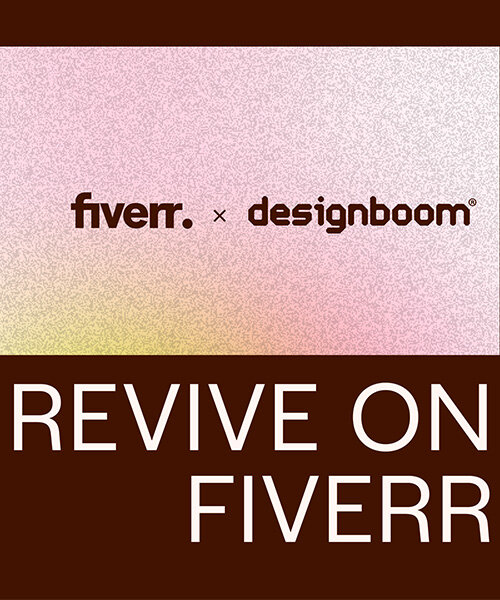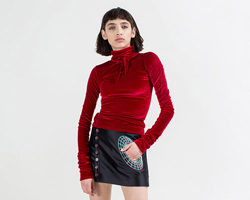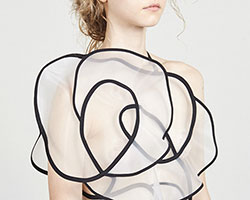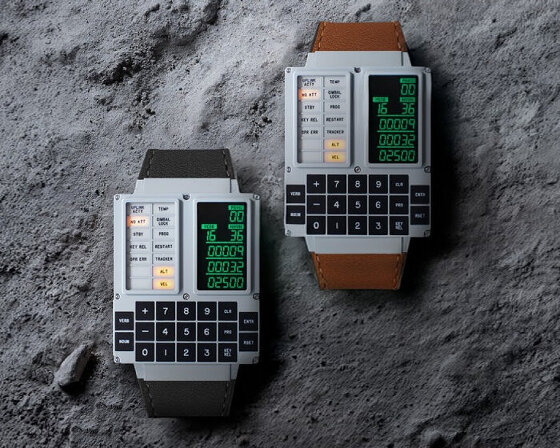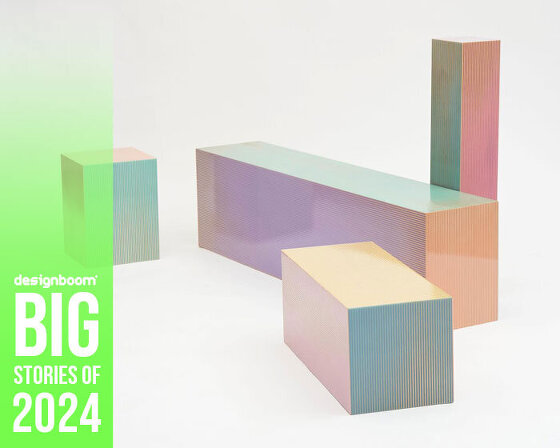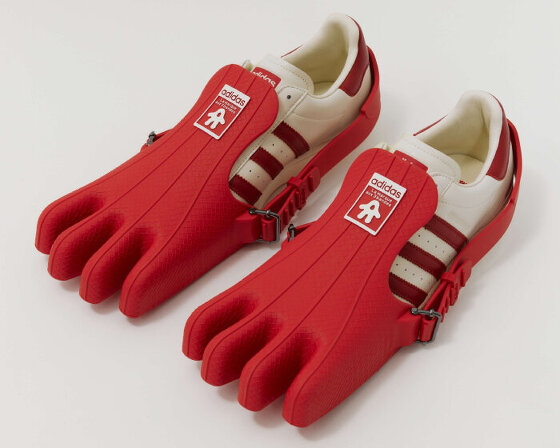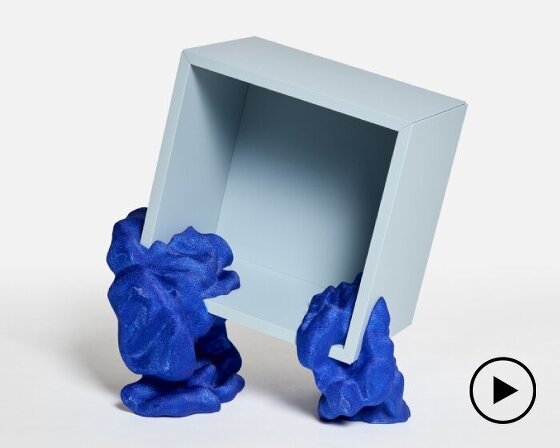classical greek sculpture once represented an ideal vision of beauty. mastering techniques during the eras of ancient civilizations, each composition was able to capture intricate details of the human body – the sinuous curves, the rigid muscles, the small facial features – with primitive means. it was copied and reproduced many times throughout history until it became an empty repetition of style and expression. for these reasons, designer noa raviv has used the classical art and its evolution as the point of departure for ‘hard copy’, a fashion collection created during her time at shenkar college of engineering and design.
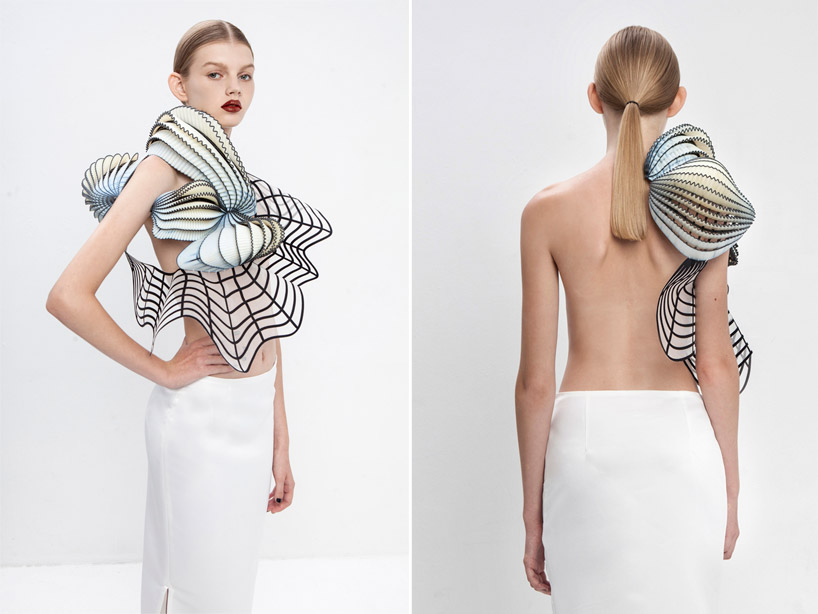
gradients of blue highlight the stress in the fabric
all images courtesy of noa raviv
in collaboration with stratasys, one of the largest manufacturers of 3D printers in the world, raviv has deliberately developed manipulated digital images with computer modeling software; deformed pieces envisioned by a command that would be difficult for the technology to execute without setting a complex configuration of parameters, components, and codes. ‘these objects cannot be printed, nor produced in reality. they exist only in the virtual space. the tension between the real and the virtual, between 2D and 3D inspired me to create this collection,’ said the tel-aviv-based designer.
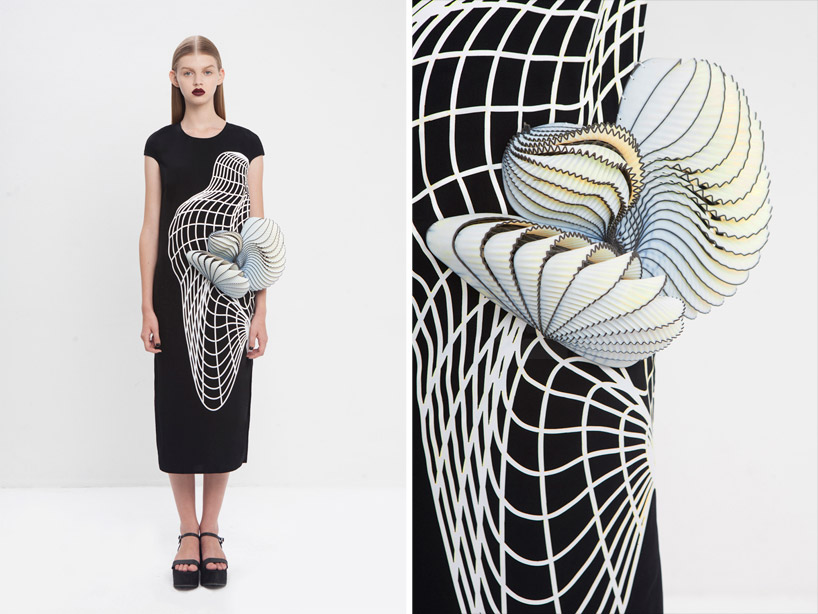
volumetric layers are transported onto the flat surface of the dress
following this motif, each item is a true representation of an alternate reality presented within the confines of a screen. for example, the grid is a tool used within programs such as rhinoceros, autoCAD, and illustrator in order to grant designers the ability to understand size, scale, and proportion. within the context of the collection, the series of criss-crossing perpendicular vectors is referenced by lines of black and white polymers that articulate ruffled and undulating silk and tulle fabrics as they assume shapes similar to the traditional versions of bodices. this is contrasted by accents of orange that decorate the perimeters of the pleated textiles, a characteristic meant to symbolize the action of selecting the edge of a volume or surface in modeling software.
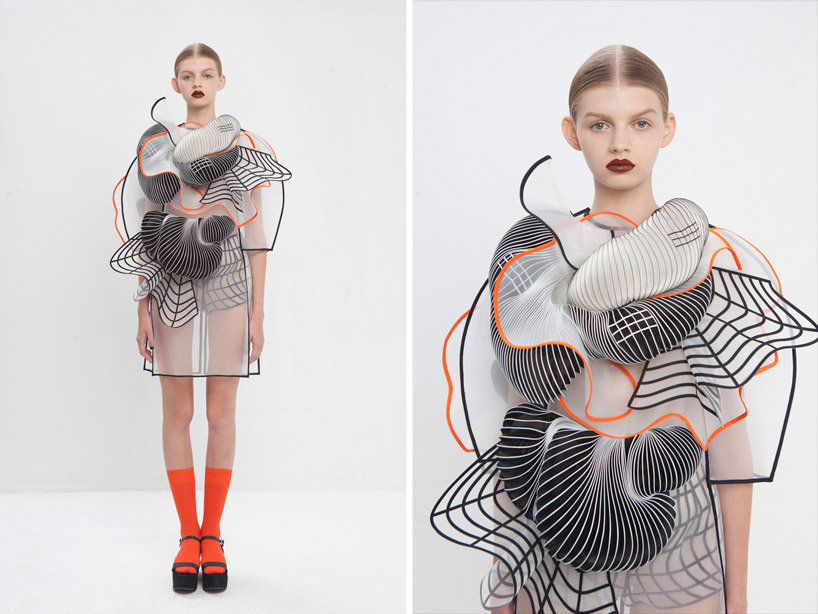
conglomeration of distorted grids and contours
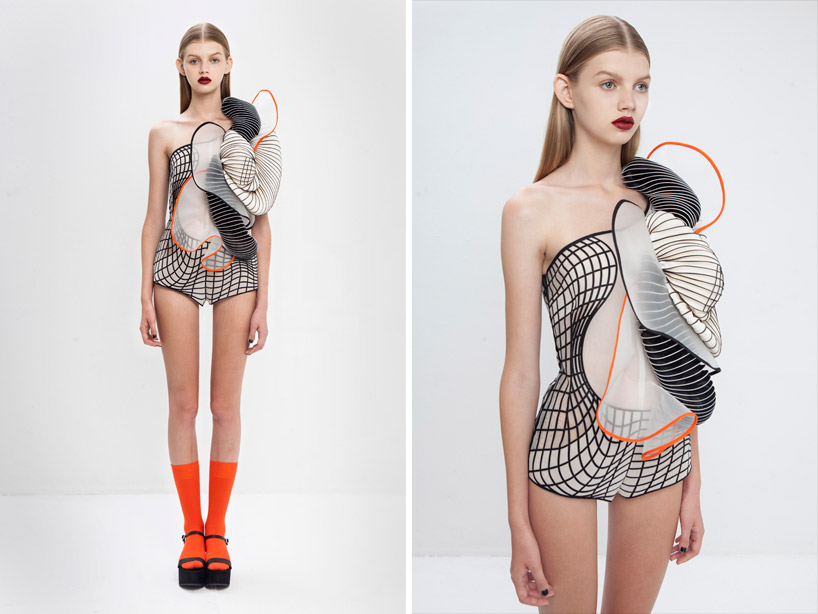
accents of orange represent the action of selection an edge in virtual space
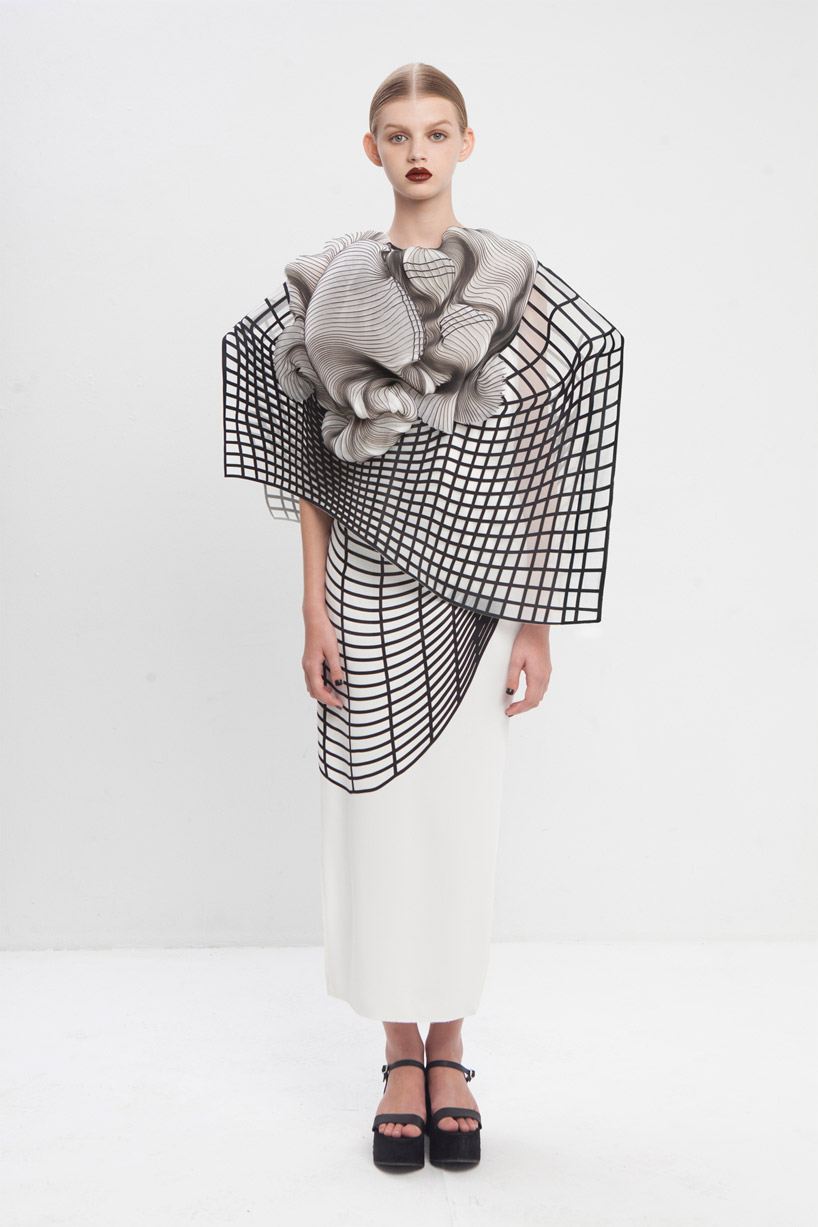
the garments consist of tull and silk organza favrics
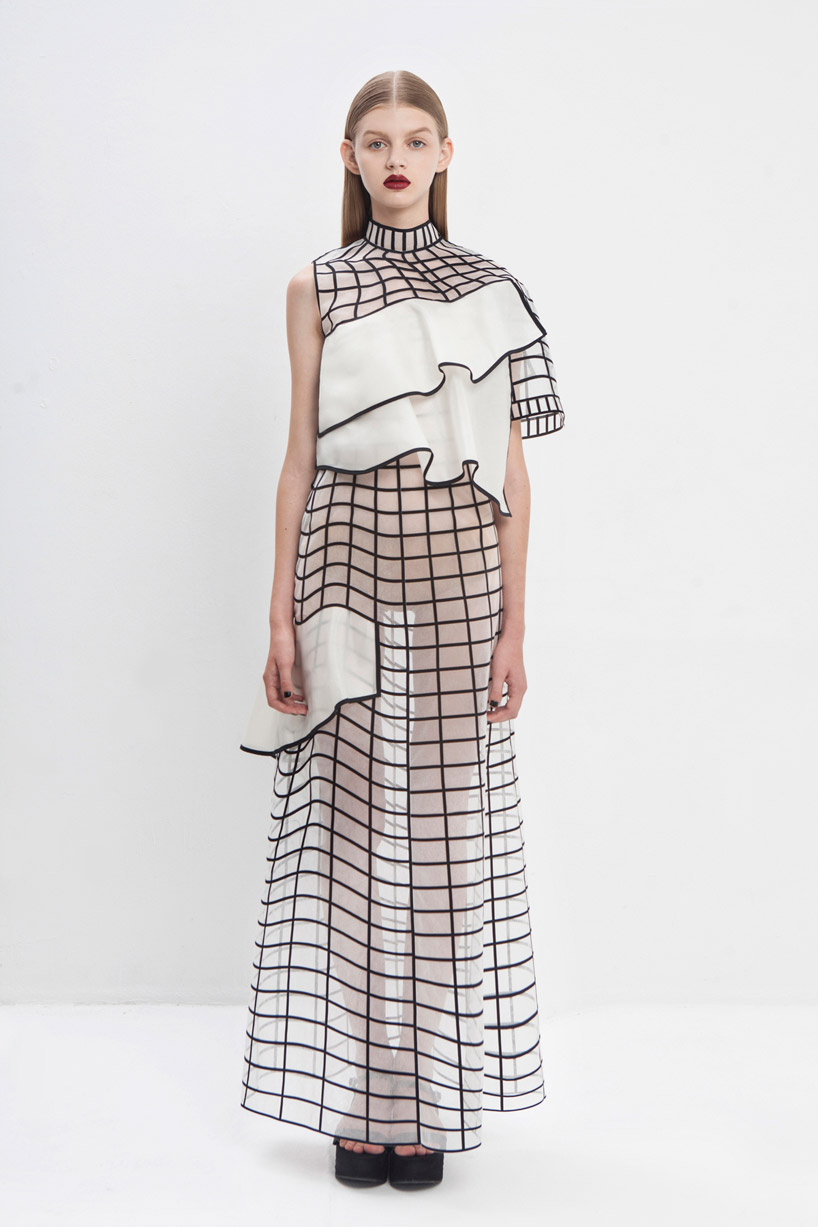
the translucency of the skirts are meant to emphasize the tops through contrast
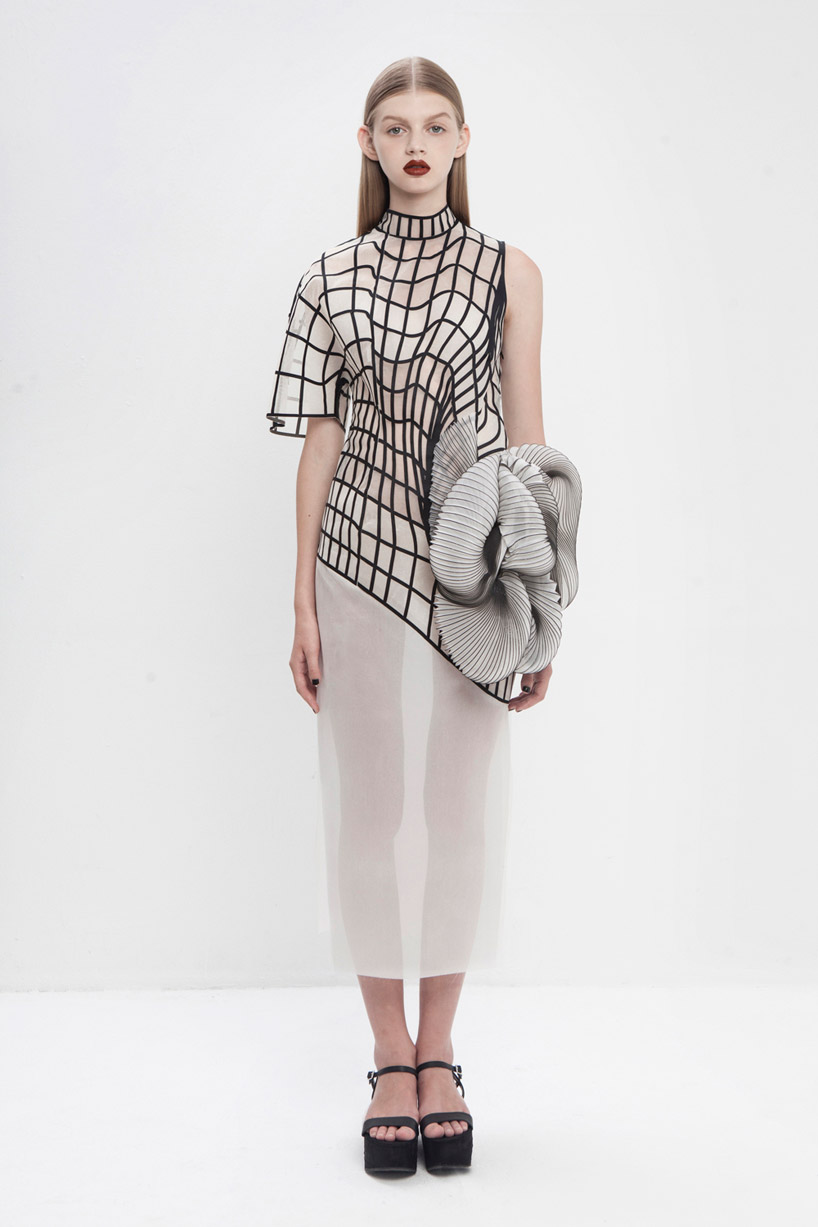
the collection was created for shenkar college of engineering and design
designboom has received this project from our ‘DIY submissions‘ feature, where we welcome our readers to submit their own work for publication. see more project submissions from our readers here.
